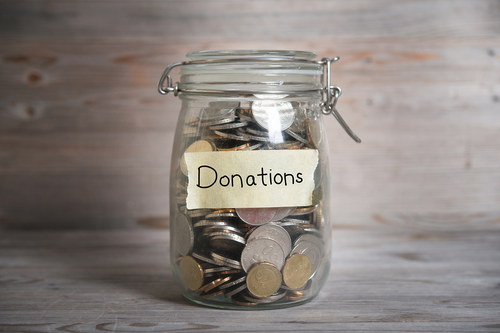Many business owners struggle to make cash deposits just in time to pay the bills that keep the grim reaper from the door. While owners should be focused on business development, customers, and profitability, they often get sucked into the day-to-day cash-flow crunch. This distracting pressure comes when cash flowing through the business is too slow and insufficient to meet daily requirements.
Keep in mind that profit and cash flow are two different things. Even if you aren’t profitable, you can have a positive cash flow for a while by working down levels of accounts receivable or inventory, or by borrowing money.
You can also experience negative cash-flow pressures even though you are profitable. This happens during growth periods when there is a buildup of assets such as inventory, accounts receivable, or equipment.
Having good cash flow and profit at the same time is the sign of a smooth-running business. However, even when things are going well, business owners often wonder (after seeing their financial statement), “If I made that much profit, where is it?”
Good question! Where does that slippery cash go? Let’s look at some of the places your working capital may be hanging out.
The Jar System
When I was a boy, most things were purchased with cash (there were no credit cards). My mother used a jar system to manage the family finances. When she cashed my father’s paycheck, she put the cash in jars marked “groceries,” “gas,” “charitable donations,” and so forth. It was a simple system to be sure she reserved enough money for each family-need.

Applying the jar system to your business, let’s take a look at where your cash is going—the obvious places, and the more subtle.
- Jar #1 Your Bank Account – You should have enough cash in this jar to fund daily business operations and gradual growth. It is best replenished out of the company’s earnings. When this jar has enough money in it, stress goes down, efficiency goes up, vendors, bankers, and employees are happy, and there is time to do more important things. A healthy business has cash reserves.
- Jar #2 Inventory – If you buy more inventory than you need, or you have items that don’t sell well, some of your “cash” is sitting on a shelf gathering dust. By turning your inventory over faster—lowering stock levels, improving product mix, or increasing sales—you will be able to move cash from the inventory jar to the bank account jar.
- Jar #3 Fixed Assets – Did you pay cash for a piece of equipment, furniture, or vehicle? Did you remodel or improve your facilities? If so, part of your available cash was invested in business assets and infrastructure, a wise decision if the result is better productivity or customer service. Just remember, when assets are depreciated (expensed over time), the profit on your P&L statement will not reflect the entire cost of the purchase right away, thus showing a higher profit. However, you will feel the effect on your cash flow immediately.
- Jar #4 Accounts Receivable – The more you sell with credit terms, and the longer customers take to pay you, the less cash you have to work with. You become a “bank” for your customers, giving them interest-free loans and temporarily tying up YOUR cash in THEIR jars.
- Jar #5 Customer Giveaways – If your gross profit margin is too low, you are essentially giving your customers a better deal than you can afford to—and no, you can’t make it up with volume! Some of your potential cash income is permanently left in your customer’s jars. Be wary of trying to win customers strictly with a low price.
- Jar #6 Waste – This jar contains wasted cash from your business operations—mistakes, returns, rework, and inefficiency. It also includes the cash you fritter away on needless overspending. For example, you continue to keep employees you can’t afford, to pay for building space you could do without, or to incur other expenses beyond what you need to successfully run the business. This often happens when sales are down, and you don’t (or can’t) cut costs proportionately.
- Jar #7 Excessive Compensation – When owners or others take more cash out of the business for personal compensation than is justified by the profit generated, it can be a severe drain on working capital and cash reserves. Over time, you can “kill the goose that lays the golden egg.”
- Jar #8 Stakeholder’s Reward – This is my favorite jar. It is the excess cash generated by the business that can be used to pay dividends and increase salaries. It eventually moves into personal jars or is used to build value in the business. With it, you can buy additional assets, greater market share, and good-will. You can also improve your internal business systems and processes for even more profit.
You Want a Cash Gusher!
Remember: the purpose of your business isn’t just to have your cash spin around from the bank account jar to the inventory jar to the accounts receivable jar. The true worth of your business is how much comes out the spigot and flows into your personal jar. You don’t want a drip. You want a gusher! This will happen when you realize that a cash shortage is the result of deeper problems. Get in The Zone and figure out what business systems are holding you back. Then improve them, and GIVE YOURSELF A RAISE!







